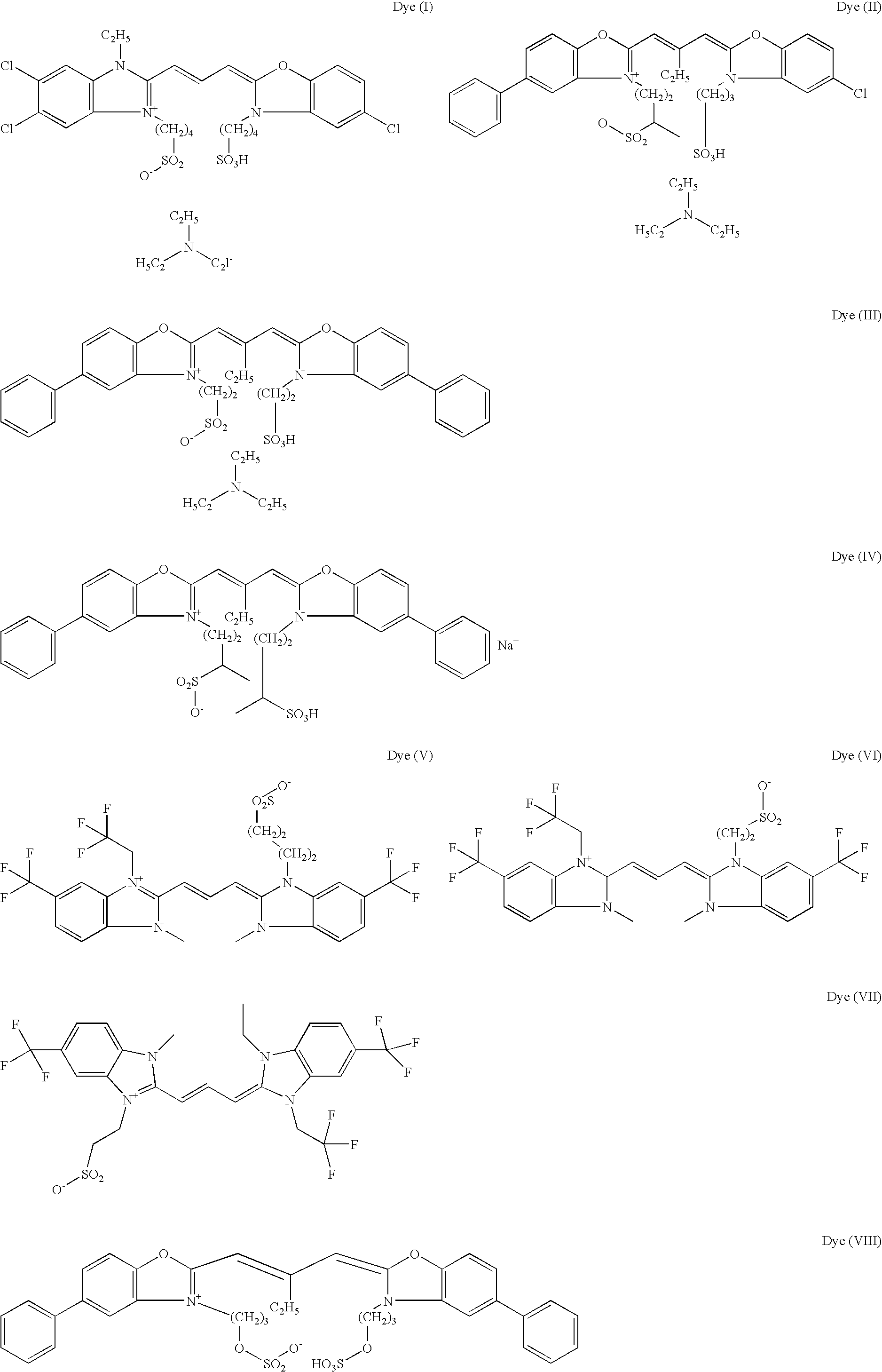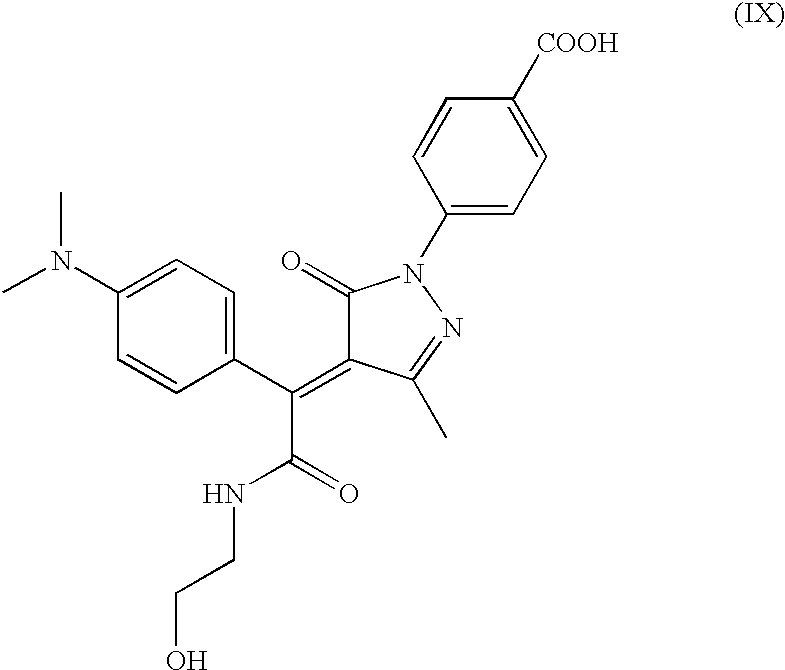Radiation-sensitive emulsion, silver halide photographic film material and radiographic intensifying screen-film combination
a technology of silver halide photographic film and radiographic intensification, applied in the direction of photosensitive materials, instruments, nuclear engineering, etc., can solve the problems of uncontrolled chemical and spectral sensing, difference in thickness growth, low contrast and covering power, etc., to achieve low fog, low darkroom sensitivity, and high speed
- Summary
- Abstract
- Description
- Claims
- Application Information
AI Technical Summary
Benefits of technology
Problems solved by technology
Method used
Image
Examples
example 1
Preparation of AgBr(I) Cubic Grain Emulsion:
Precipitation:
To 1 l of a solution, containing 15 g of methionine and 50 g of gelatine, adjusted to a pH of 5.8, were added, at 60.degree. C., by double jet addition, a 2.94 M solution of AgNO.sub.3 at a constant flow rate of 5.7 ml / min during 5 minutes and a solution of a mixture of 2.91 M of KBr and 0.03 M of KI at a flow rate controlled in order to maintain pAg constant corresponding with a value of 89 mV vs. Ag / AgCl(sat.) reference electrode. Then the flow rate of the AgNO.sub.3 solution was increased linearly up to 21 ml / min during 72 minutes and 46 seconds. The cubic grains thus prepared were composed of 99 mole % AgBr and 1 mole % AgI, based on silver, with an average grain size of 0.70 .mu.m.
Chemical Ripening Conditions:
pH 6.0, optimized quantities of sodium thiosulphate, chloro auric acid, ammonium thiocyanate, sodium toluene thiosulphonate and sodium sulphite.
Coating of the Materials
Preparation of the Film Material.
Before coating...
example 2
In the same way as in Example 1 the Materials Nos. 14-26 were coated. The combination of spectral sensitizing dyes therein has been summarized in the Table 3, whereas the same results obtained with respect to fog, speed, darkroom sensitivity and stain level have been summarized in Table 4.
Same conclusions can be drawn from the results obtained in the Table 4 hereinafter as from those in Table 2 from Example 1.
In the present Example however it has moreover been demonstrated that the ratio amount of the dyes is decisive in order to fully reach the objects of the present invention with respect to speed-darkroom-sensitivity and dye stain level (see inventive samples Nos. 15-17-19-21-23-25 versus comparative samples Nos. 16-18-20-22-24-26).
As has been clearly shown in this Example, the dyes according to the formulae representing the "second spectrally sensitizing dye" may again be symmetric or asymmetric, provided that the conditions as claimed have been fulfilled.
TABLE 4
PUM
| Property | Measurement | Unit |
|---|---|---|
| wavelength | aaaaa | aaaaa |
| average edge length | aaaaa | aaaaa |
| edge length | aaaaa | aaaaa |
Abstract
Description
Claims
Application Information
 Login to View More
Login to View More - R&D
- Intellectual Property
- Life Sciences
- Materials
- Tech Scout
- Unparalleled Data Quality
- Higher Quality Content
- 60% Fewer Hallucinations
Browse by: Latest US Patents, China's latest patents, Technical Efficacy Thesaurus, Application Domain, Technology Topic, Popular Technical Reports.
© 2025 PatSnap. All rights reserved.Legal|Privacy policy|Modern Slavery Act Transparency Statement|Sitemap|About US| Contact US: help@patsnap.com



